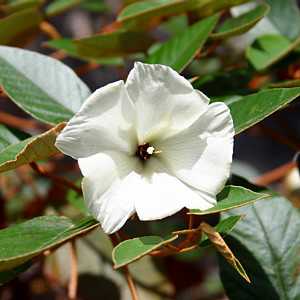⏱ QUICK READ
How good is the air quality here? We’re a long way from any major sources of pollution, so it might be pretty good, yes? In fact, of all the world’s reporting stations, St Helena’s air is in the top 15%! Learn about our unpolluted air on this page.

How do we know this?
In 2016 NASA set up an AERONET site on St Helena, located at our Weather Station. The AERONET instruments measure air-quality - specifically the amount of dust and other particles in the air. Cleaner air has fewer particles. Our site is one of around 1,200 reporting sites around the globe.
NASA makes the data collected by all its AERONET sites available for download on the AERONET website. We were able to download the dataset AOD_Level15_Monthly_V3.tar.gz from aeronet.gsfc.nasa.gov/new_web/download_all_v3_aod.html. We then processed this data as follows:
Amalgamate the data collected for all particulate sizes and all dates into a single, average ‘Pollution Index’ value for each site;
Process the decimal value to give a simple integer;
Rank these, smallest (cleanest air) to highest (most polluted air).
We then noted St Helena’s position in that list - 142 out of 1197 reporting stations. This puts St Helena at 12% - comfortably in the top 15% by air-quality.
We present below a graph showing some selected locations and their pollution indexes, from our analysis:
Put another way, if the best reporting station (at the South Pole) scores 231, and the worst reporting station (Bangkok, Thailand) scores 7318, then St Helena has under 10% of the air pollution of Bangkok and only 3 times as much as the South Pole.
The AERONET equipment is positioned 434m above sea level at 15°56’32.64”W, 5°40’2.28”S.
In the middle of the Atlantic Ocean, the air is pure, the pace slow, and the ocean looms as big as the sky.{b}
Why is this?

Wind direction{1}
As is explained on our page Weather and climate, the wind here blows almost exclusively from the SSE/SE (diagram, right). This means it passes up from the South Pole, clips the southern tip of Africa, then travels exclusively over the sea until it reaches St Helena. It picks up a small amount of pollution from Africa but apart from that it gains no pollutants.
St Helena itself adds little to the mix. There is no heavy industry here. The main local contributors to poor air quality are older vehicles (of which we have a few) and the diesel-powered Power Station in Ruperts. Apart from these we have nothing to significantly deteriorate our air-quality.
What does this mean?
Firstly it means that respiratory diseases caused by poor air are not an issue on St Helena. But for a visitor to St Helena it means you can go out and about and fill your lungs with our clean, fresh air!
Even Jamestown?
Jamestown is a narrow, dry valley, and the hillsides combined with a lack of rain probably add a bit to the town’s air pollution{2}, but has still possibly the best air-quality of any world Capital. Some older people who live ‘up-country’ do say they find Jamestown ‘polluted’, but then it all depends on what you are used to. For many years the editor of this website lived in London, UK which is so polluted that when you fly out of London Heathrow Airport you can see the dome of dirty air over the city. Jamestown has nothing on that!
The risks from air pollution are now far greater than previously thought or understood, particularly for heart disease and strokes{c}
The sunset puzzle
We have extremely clear air, but get spectacular sunsets, a phenomenon more commonly associated with a polluted atmosphere. We explore this dichotomy on our page Sunsets.
Read More
Article: We Will Continue to Work Closely with NASA
By Hannah Durnford, SAMS, published in The Sentinel, 22nd September 2016

David Giles conducting checks with the MET Station Team
NASA Scientist, David Giles recently visited St Helena to launch an instrument under the AERONET Programme. The programme is an international network of automatic sun and sky scanning instruments which measure the aerosol optical depth and collect related aerosol characteristics.
The US National Aeronautics and Space Administration (NASA) contacted the island’s MET Office a few months ago and sent out equipment via Cape Town, which was forwarded to St Helena for the installation project. Meteorological Station Manager Lori Bennett told The Sentinel, We were delighted to facilitate David’s visit to St Helena. All that could have been accomplished in his short time was achieved.
There were connection issues at the beginning via the Sure Mobile FTP Network; however the device is now functioning as it should.
While David was on board the RMS he conducted presentations and discussions on the awareness of climate change. He also performed ship-based measurements in partnership with the flight overpasses carried out by the NASA P-3B Airborne Laboratory. He was able to pick up, via his handheld device, smoke particles from the recent Angolan forest fires.
The island’s MET Office hopes that they will continue to work with NASA even after this visit, We will continue to work closely with NASA and look forward to the possibility of installing additional global monitoring equipment in the future on the MET Site at Bottom Woods, Lori said.
Credits:
{a} Bob Dylan, ‘Blowin’ in the wind’{b} Attitude Magazine, December 2021{c} Dr. Maria Neira of the World Health Organization (WHO)
Footnotes:
{1} Showing the wind direction on each day of a year.{2} And also create a phenomenon called ‘Town Dust’ - a nuisance to clean up and a problem if it builds up in your computer or other machinery.


